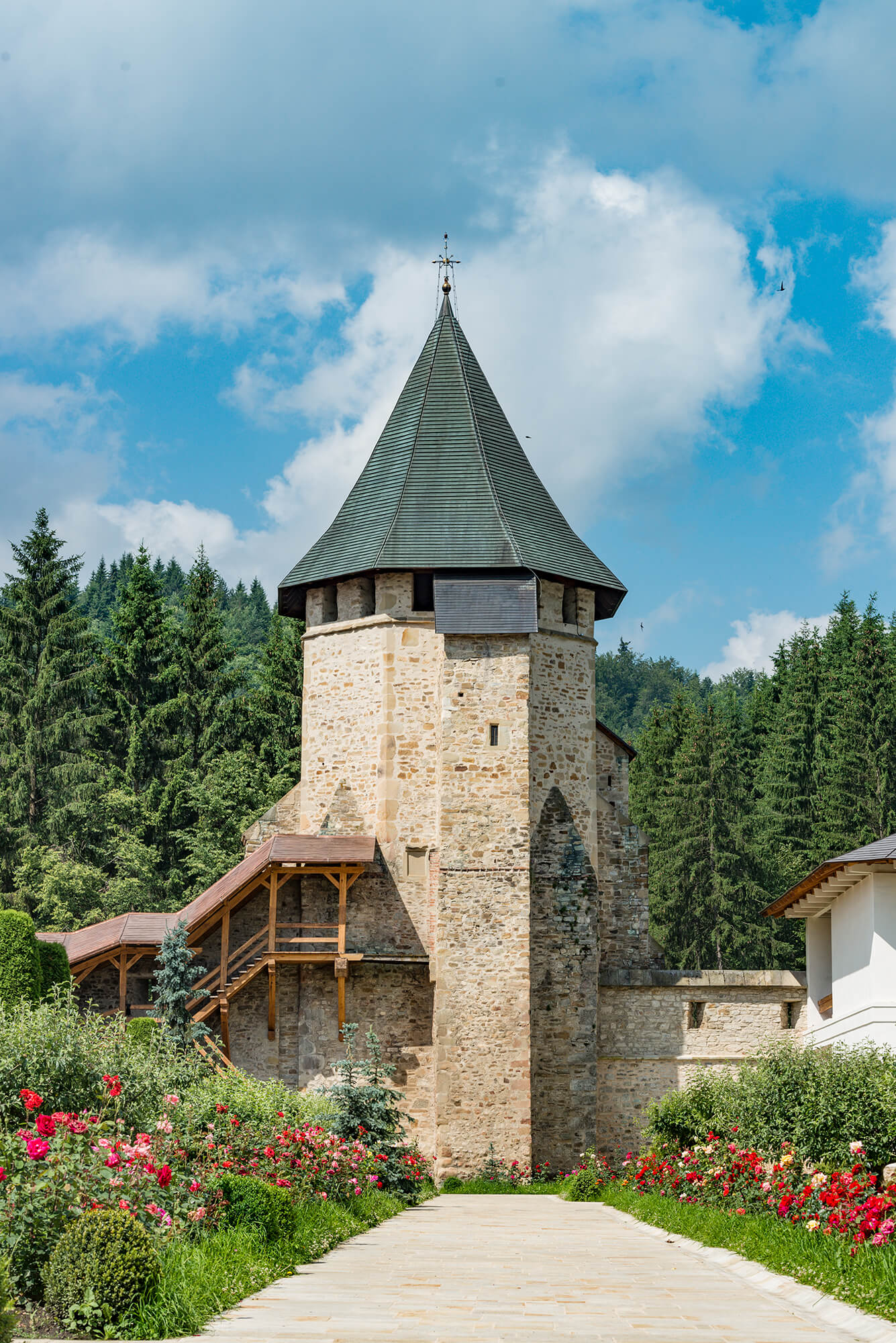
“As there were mutinies in the days of Prince Constantine Cantemir, Cossack, Polish and Moldavian mercenaries came to plunder the wealth of the monastery. But since the tower was strong, they did not succeed. So they told the monks to give up the tower promising not to take anything from the monastery treasures. But the monks didn’t believe them and refused to surrender. So the Cossack, the Polish and the Moldavians set the monastery on fire and the monks, fearing the arson of the monastery, surrendered the tower. Then, as they had water guns, those Cossacks, Poles and Moldavians extinguished the fire. And they took from the tower the boyars’ and merchants’ possessions, everything that they could sell or boast with. They didn’t take anything from the belongings of the monastery, except for Prince Stephen’s bow.” (Ion Neculce, The Chronicle of the Country of Moldavia).
The tower that Ion Neculce mentions is the only construction belonging to Putna Monastery which has preserved its original shape since the time of its founder. It has also kept its initial name: Treasury Tower or the Tower of the Treasures, which clearly speaks of its function: keeping the monastery treasures in times of hardship.





